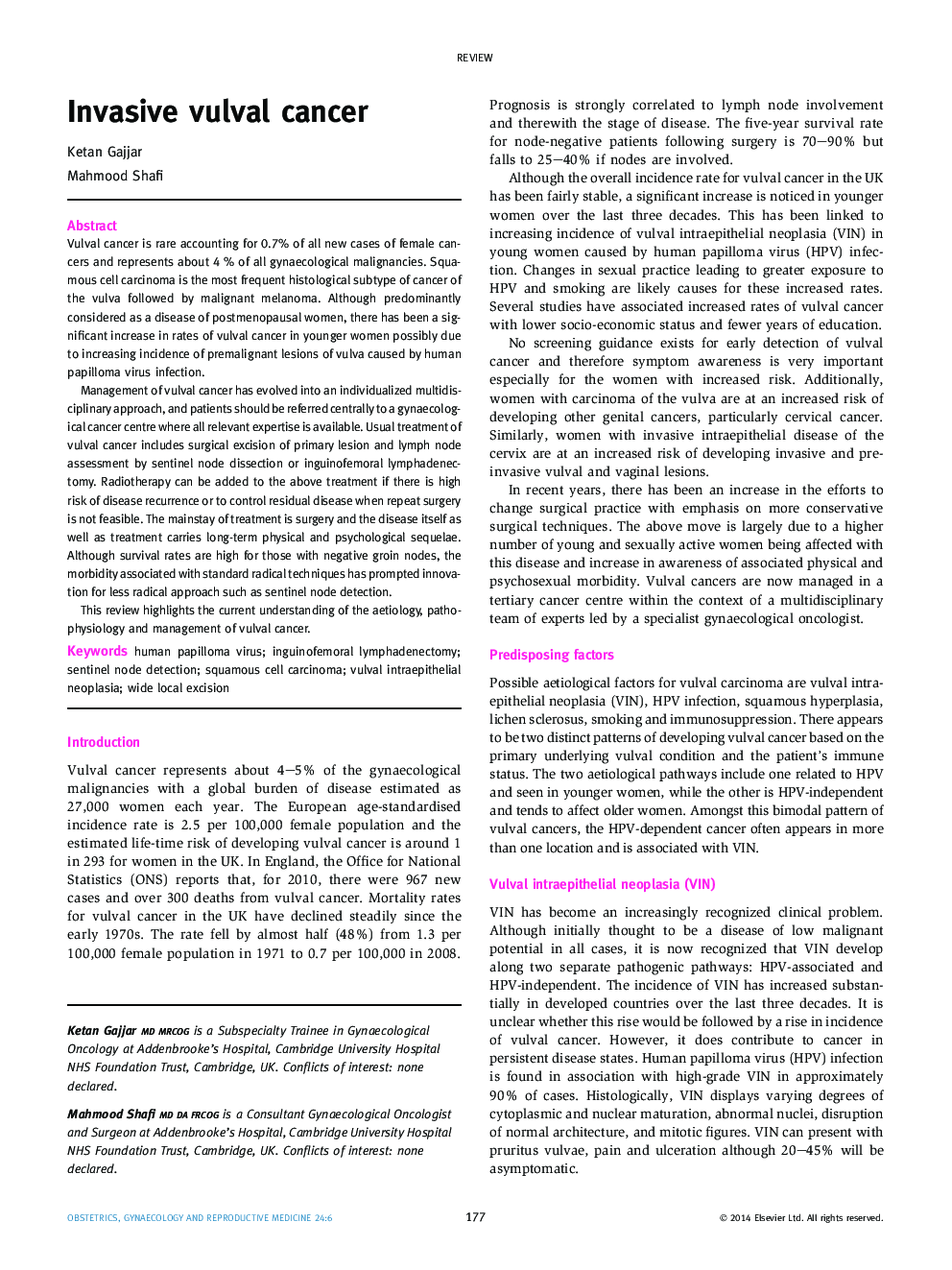| Article ID | Journal | Published Year | Pages | File Type |
|---|---|---|---|---|
| 3966851 | Obstetrics, Gynaecology & Reproductive Medicine | 2014 | 9 Pages |
Vulval cancer is rare accounting for 0.7% of all new cases of female cancers and represents about 4 % of all gynaecological malignancies. Squamous cell carcinoma is the most frequent histological subtype of cancer of the vulva followed by malignant melanoma. Although predominantly considered as a disease of postmenopausal women, there has been a significant increase in rates of vulval cancer in younger women possibly due to increasing incidence of premalignant lesions of vulva caused by human papilloma virus infection.Management of vulval cancer has evolved into an individualized multidisciplinary approach, and patients should be referred centrally to a gynaecological cancer centre where all relevant expertise is available. Usual treatment of vulval cancer includes surgical excision of primary lesion and lymph node assessment by sentinel node dissection or inguinofemoral lymphadenectomy. Radiotherapy can be added to the above treatment if there is high risk of disease recurrence or to control residual disease when repeat surgery is not feasible. The mainstay of treatment is surgery and the disease itself as well as treatment carries long-term physical and psychological sequelae. Although survival rates are high for those with negative groin nodes, the morbidity associated with standard radical techniques has prompted innovation for less radical approach such as sentinel node detection.This review highlights the current understanding of the aetiology, pathophysiology and management of vulval cancer.
